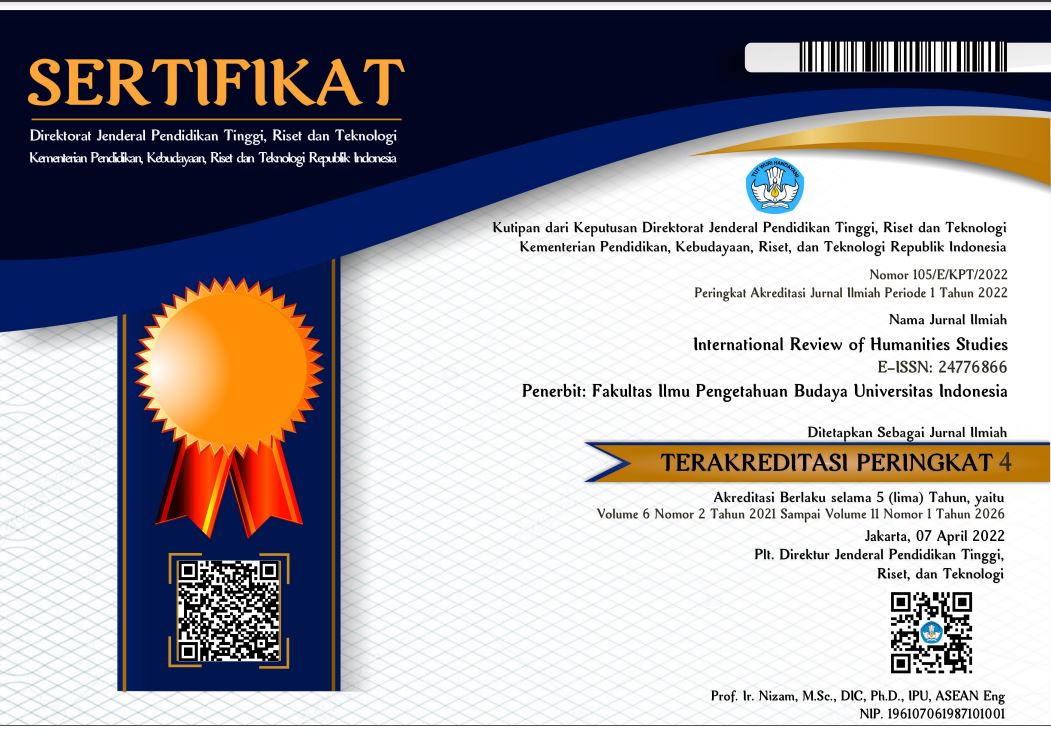International Review of Humanities Studies

Abstract
Branding as a cultural production is a phenomenon that involves the creation of narratives, symbols, and identities that affect individuals and social. Through the study of material culture, this article discusses the representation of a person's lifestyle and self-identification in meeting the needs of smartphones with the iPhone brand. Using the literature study method, social media data on the internet shows that there is a business service strategy in the form of savings or social gathering in buying an iPhone to consumers. The research results show that strong branding images built by Apple Inc. make people who economically are not in the upper middle class and cannot pursue these lifestyles (lifestyle and consumption) so that they take actions that can provide middle-class touch which can also be called virtual consumption. In this case, material culture can be understood as a giver of meaning and related, with strength, power, and self -construction.
References
Aaker, D. A. (1991). Managing Brand Equity: Capitalizing on the Value of a Brand Name. New York: The Free Press.
Arnould, E. J. and Thompson, C. J. (2005). “Consumer Culture Theory (CCT): Twenty Years of Research” in Journal of Consumer Research, 31 (4): 868-882.
Barthes, R. (1972). Mythologies. Hill and Wang.
Curry, D. (2024, February 20). Apple Statistics. Business of Apps. Retrieved from available at https://www.businessofapps.com/data/apple-statistics/
Dietler, M. (2010). “Consumption” in Hicks, D., and Beaudry, M., C., eds. The Oxford handbook of material culture studies. OUP Oxford, pp. 207-226.
Erikson, E. H. (1980). Identity and Life-cycle. New York: Norton.
Gerke, S. (2002). “Global lifestyles under local conditions: the New Indonesian middle class” in Beng-Huat Chua, ed. Consumption in Asia: Lifestyle and Identities. London and New York: Routledge.
Holt, D. B. (2004). How Brands Become Icons: The Principles of Cultural Branding. Harvard Business Review Press.
Koentjaraningrat. (1990). Pengantar Ilmu Antropologi. Jakarta: Rineka Cipta.
Klein, N. (2000). No Logo: Taking Aim at the Brand Bullies. Picador.
Kotler, P., and Armstrong, G. (2001). Prinsip-prinsip Pemasaran, Jilid 2, edisi ke-8. Jakarta: Penerbit Erlangga.
Kotler, P., and Armstrong, G. (2012). Principles of Marketing (14th edition). New Jersey: Pearson Education.
McCracken, G. (1988). Culture and Consumption: New Approaches to the Symbolic Character of Consumer Goods and Activities. Indiana University Press.
Miller, D. (2001). Material cultures why some things matter. London: Taylor & Francis e-Library.
Muñiz, A. M., & O’Guinn, T. C. (2001). Brand Community. Journal of Consumer Research, 27(4), 412-432.
Slater, D. (1997). Consumer Culture and Modernity. Cambridge: Polity Press.
GS Statcounter. (2024, May 30). Smartphone market share worldwide. Oberlo. Retrieved from available at https://www.oberlo.com/statistics/smartphone-market-share
Woodward, I. (2007). Understanding Material Culture. London: SAGE Publication.
Recommended Citation
Assilmi, Ghilman
(2024)
"MATERIAL CULTURE AS A LIFESTYLE AND SELF-IDENTITY: A CASE STUDY OF THE ROTATING SAVINGS TO BUY AN IPHONE IN INDONESIA,"
International Review of Humanities Studies: Vol. 9:
No.
2, Article 13.
DOI: 10.7454/irhs.v9i2.1320
Available at:
https://scholarhub.ui.ac.id/irhs/vol9/iss2/13
Included in
Anthropology Commons, Art and Design Commons, Creative Writing Commons, Cultural Heritage Law Commons, Education Law Commons, Film and Media Studies Commons, History Commons, Intellectual Property Law Commons, International and Area Studies Commons, Legal Writing and Research Commons, Linguistics Commons, Museum Studies Commons, Philosophy Commons, Urban Studies and Planning Commons


